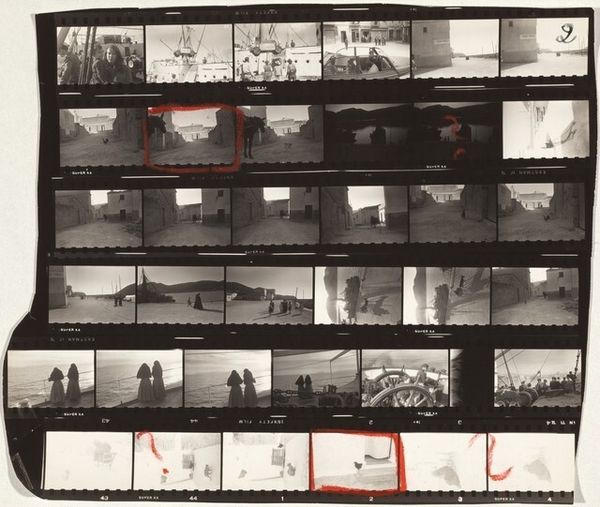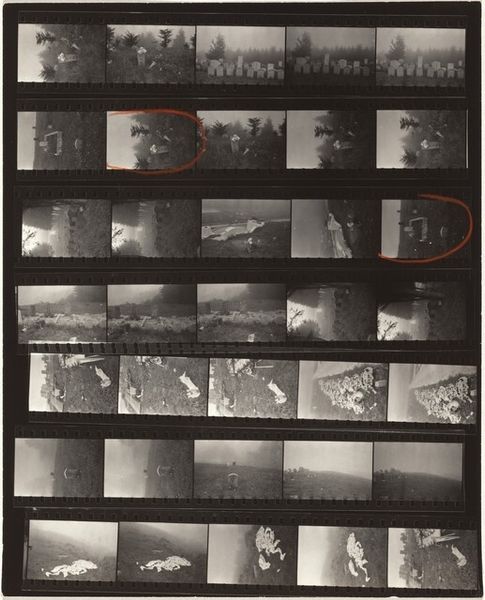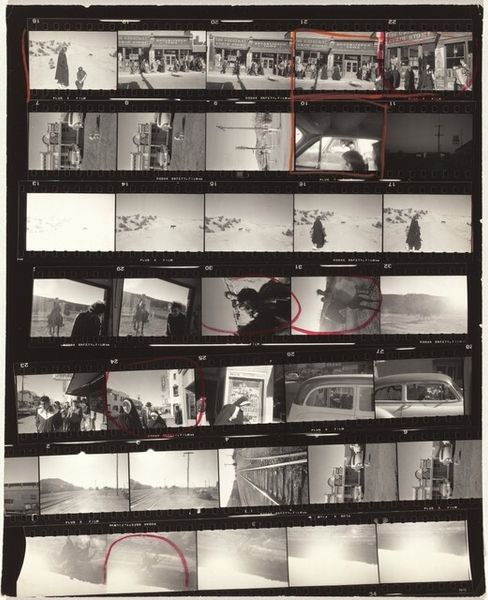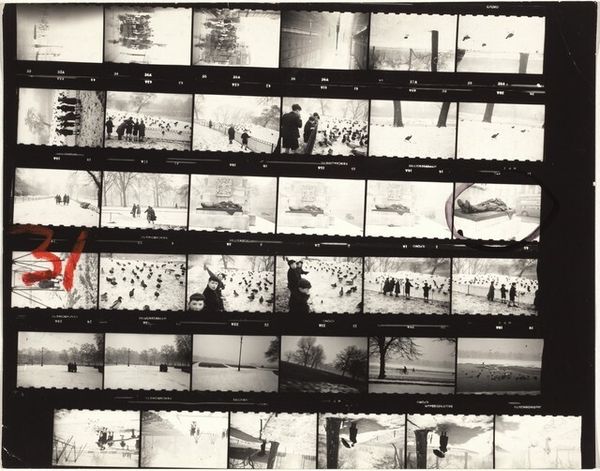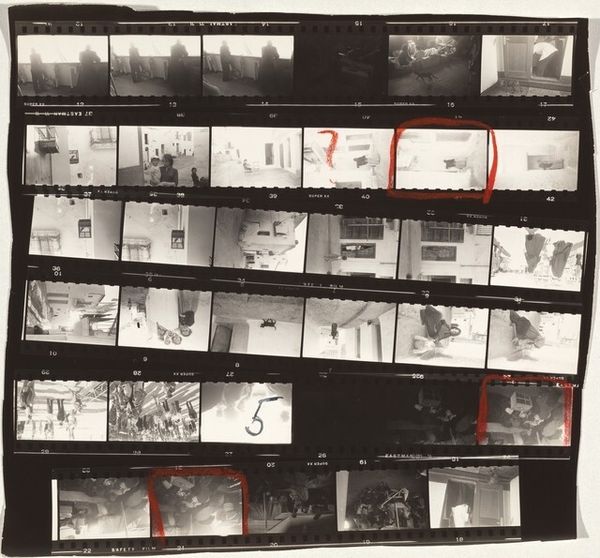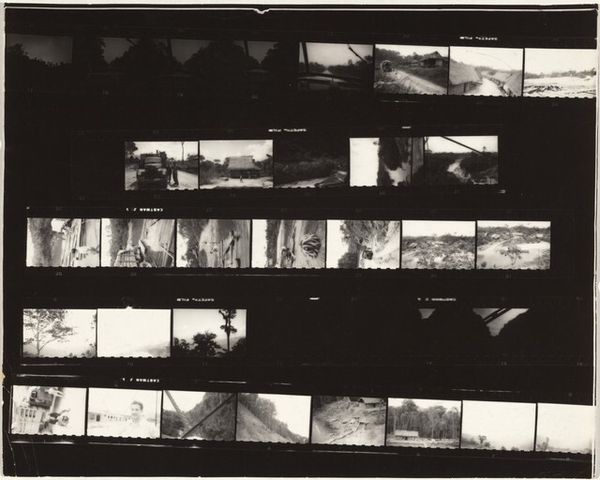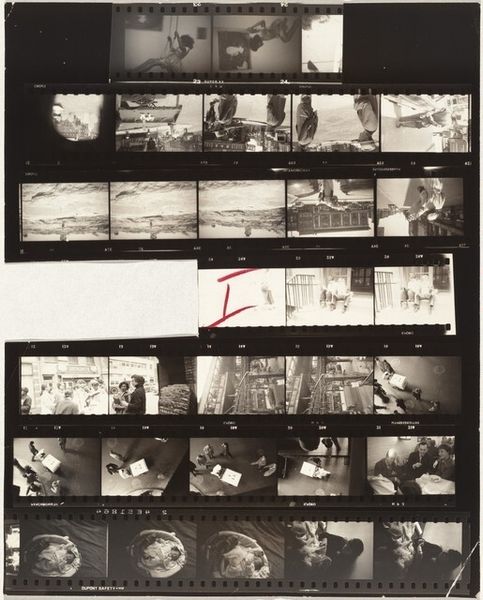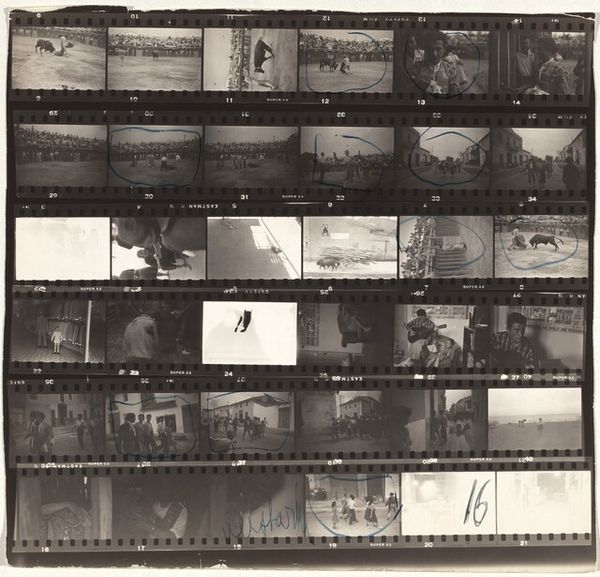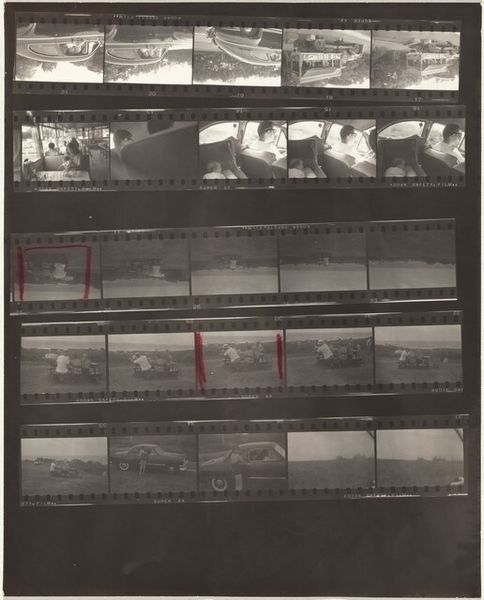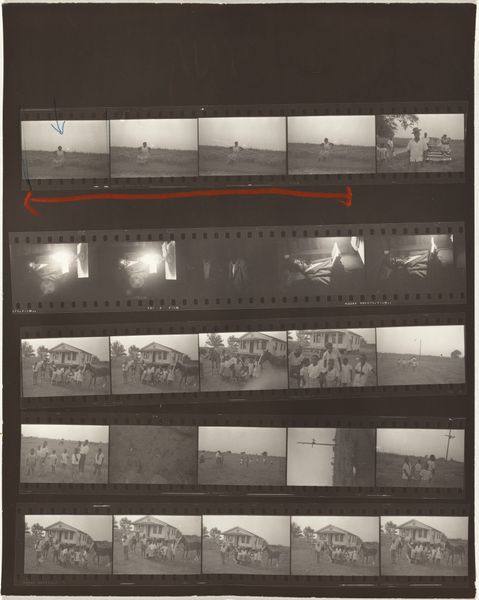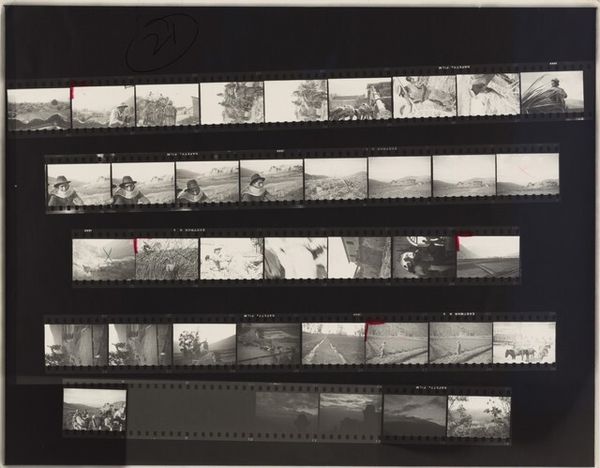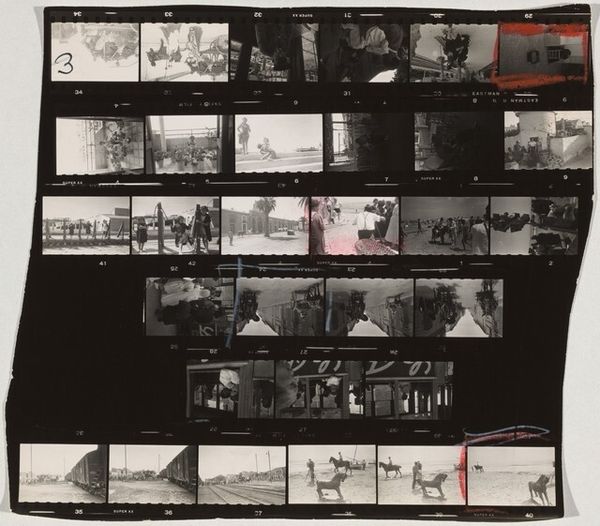
photography, gelatin-silver-print
#
film photography
#
landscape
#
street-photography
#
photography
#
gelatin-silver-print
Dimensions: overall: 20.9 x 24.2 cm (8 1/4 x 9 1/2 in.)
Copyright: National Gallery of Art: CC0 1.0
Curator: Well, this is a striking gelatin silver print from 1952 by Robert Frank titled "Valencia, Spain 18." My first impression is a sense of disjointed memory. It's presented as a contact sheet, not a finished image. Editor: It certainly has a rough-and-ready quality. You immediately get a sense of the photographic process laid bare. The artist seemingly documented life and land as material – fishing boats and the ubiquitous presence of the sea as witness. Curator: Exactly. The raw, unedited quality really emphasizes the post-war moment, and the gritty social realities that Frank explored through his lens. You feel the hand of the photographer, not just in composition but in selection, by virtue of the red pencil markings we see. It’s as if Frank is inviting us into his working methods, acknowledging the political and economic context inherent to it. Editor: Definitely. You notice how Frank captures buildings, rail tracks, beaches with local people. The train suggests technological advance, and with its pollution, is set against people fishing as if straight from central casting for social progress! Curator: Yes, and in showing the development process as an inherent part of the aesthetic expression, Frank really questions the whole idea of art existing within traditional gallery boundaries. We're encouraged to think of the act of creating, its origins. These raw photographic frames ask whether it's possible to detach aesthetics from manufacture. Editor: He prompts the viewer to confront not just the image but how that image came into being; that act of recording, cropping, the role of film stock and darkroom alchemy. What a powerful tool for making us conscious about photographic art! Curator: Precisely. It challenges us to reconsider how social observations themselves contribute to the dialogue concerning fine art, particularly where such work gains acceptance and acknowledgment within an institutional context. Editor: Thinking about its process and material offers valuable and accessible means to rethink high-low divisions in art. This truly embodies art rooted in social context! Curator: A fantastic point. Considering the final edits marked on this work, it speaks to how social narrative plays an active role in redefining art’s purpose within our world. Editor: Indeed. Through the lens of labor, production and circumstance, this contact sheet moves us toward seeing art for its tangible and relational worth.
Comments
No comments
Be the first to comment and join the conversation on the ultimate creative platform.
